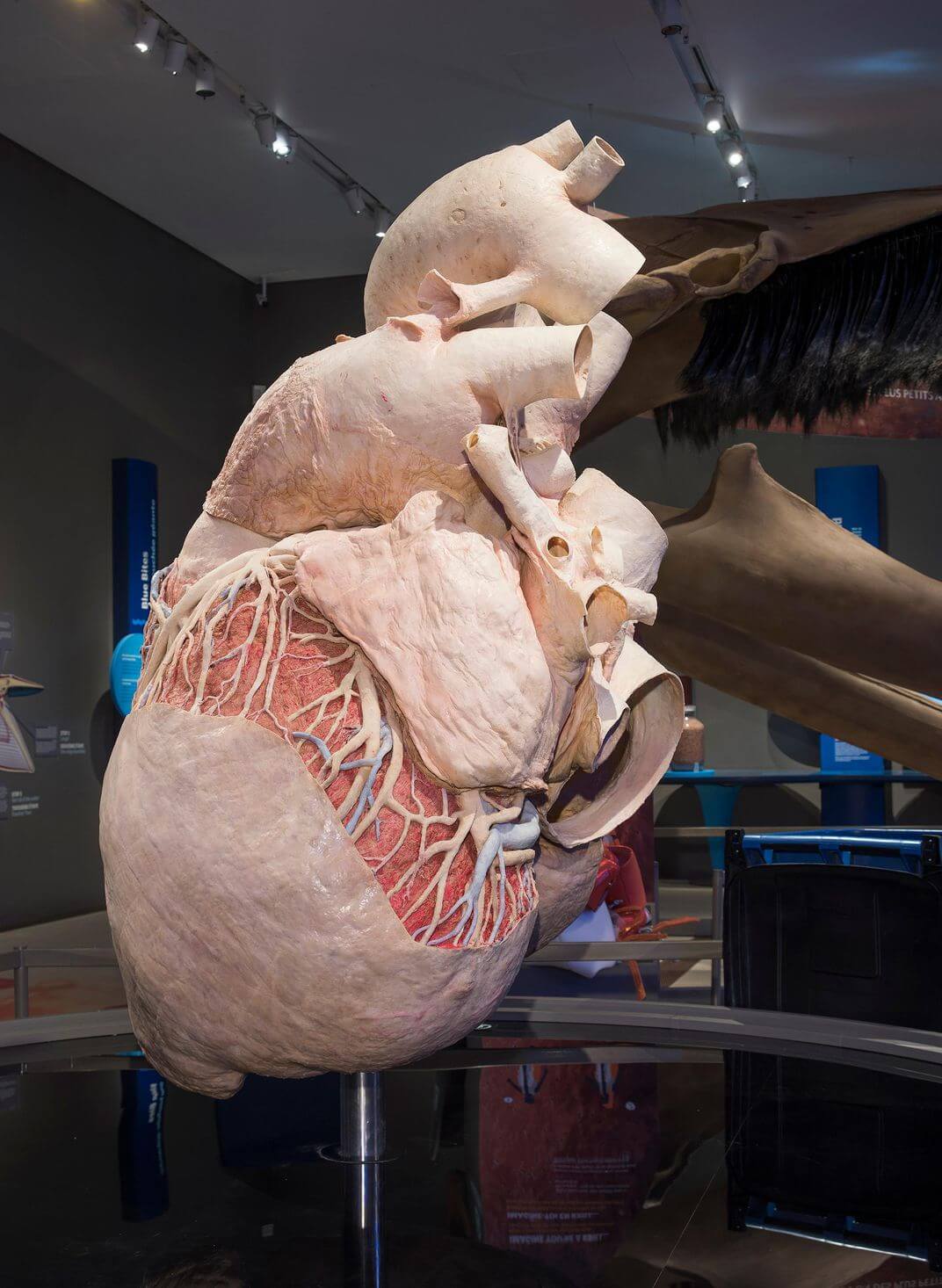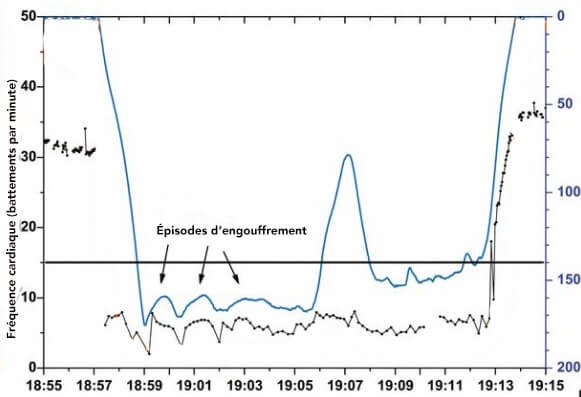In an uncommon exercise in cetacean research, a team successfully placed a tag with electrodes on the back of a blue whale to calculate its heart rate. The results are staggering: this medium-sized bull with a resting heart rate of around 15 beats a minute can lower it to as little as two! Two beats a minute! That’s a drop of over 85%. In comparison, a human at rest has a heart rate of between 50 and 80 beats per minute and can subconsciously lower his or her pulse by as much as 25% when holding his or her breath. But how is the blue whale able to survive such a low heart rate and, especially, what are the benefits for the animal?
Blood circulation and the heart
One of the functions of the bloodstream is to provide oxygen to every organ in the body. This oxygen allows organs (including muscles) to meet their energy needs. But in order for blood to circulate, you need a pump: the heart!
Heart rate is the number of heartbeats per minute. This is one of the parameters of blood circulation that is notably determined by the energy (oxygen in particular) needs of the organs. For example, if one is exercising, the muscles need more energy, which means more oxygen. Heart rate and respiratory rate (number of inhalations and exhalations per minute) will increase. Result: the blood will be oxygenated more quickly and distributed to all the organs in the body (including the heart itself, which also needs energy to function!).
Hold your breath… and your heart!
During dives, oxygen stops entering the lungs. In these situations, many mammals have an unconscious reflex to lower their heart rate compared to their at-rest pulse. This helps limit consumption of blood oxygen reserves by the organs (including the heart).
During their feeding dives, blue whales will repeatedly engulf their prey. These engulfing manoeuvres are very costly in terms of energy and in turn oxygen. Normally, such energy needs would cause the heart to accelerate significantly. However, for the blue whale, these increases in heart rate are very minor compared to the resting heart rate (see Figure 2). How is this possible? One of the theories is that the physical properties of the aorta might allow for a sort of extension of the blood pulse between heartbeats. This would somewhat compensate for the low heart rate, even during the whales’ energy-intensive engulfing tactics. And, because they are minor, these increases in heart rate likely conserve oxygen in the blood. The blue whale would thus be able to stay underwater longer without breathing while engaging in energy-demanding manoeuvres. At the surface, the animal’s heart rate increases, which optimizes gas exchange with the outside and oxygenation of the blood.
In black, the heart rate in beats per minute (the solid line with a value of 15 beats/minute represents a blue whale’s heart rate when at rest). In blue, water depth.
A number of other peculiarities in blue whales explain their ability to lower their heart rate so slightly and to optimize their organs’ use of blood oxygen reserves. Blue whales can build up fairly good oxygen reserves in their muscles and many of their vital organs such as the brain. As a result, they would not have to excessively draw from their blood oxygen reserves during their dives. Further, they are believed to have the ability to greatly reduce blood circulation in their peripheral organs, which would concentrate the blood for supplying the animal’s vital organs.
The morphological and physiological adaptations that cetaceans have undergone for diving continue to impress!







